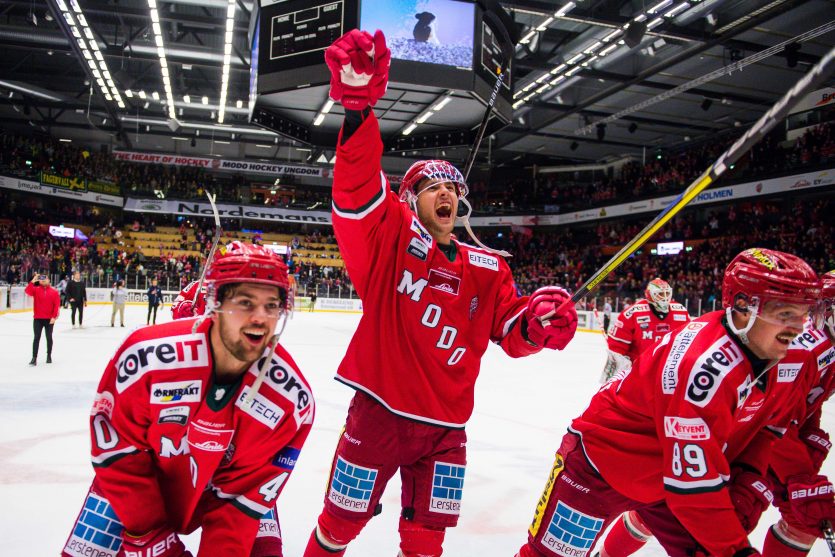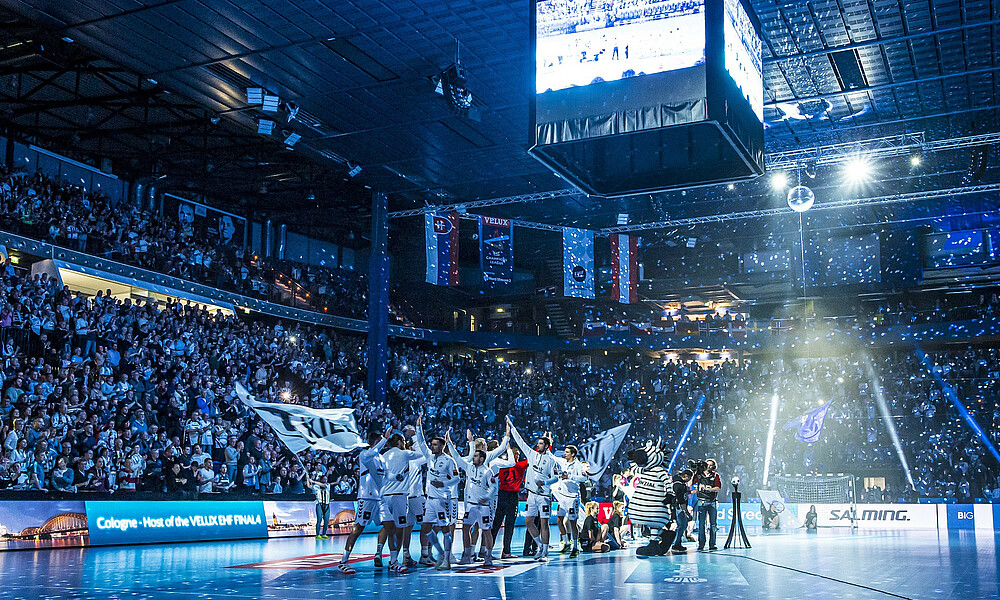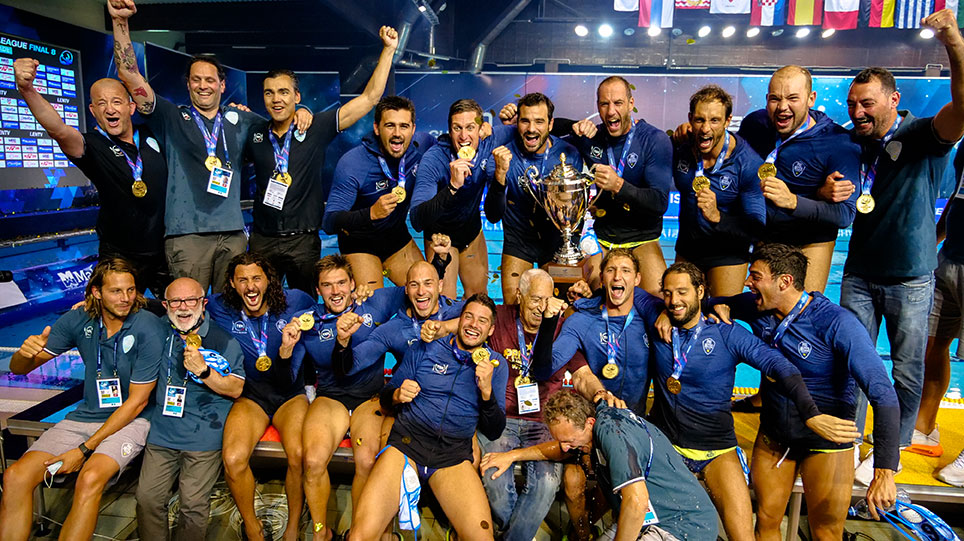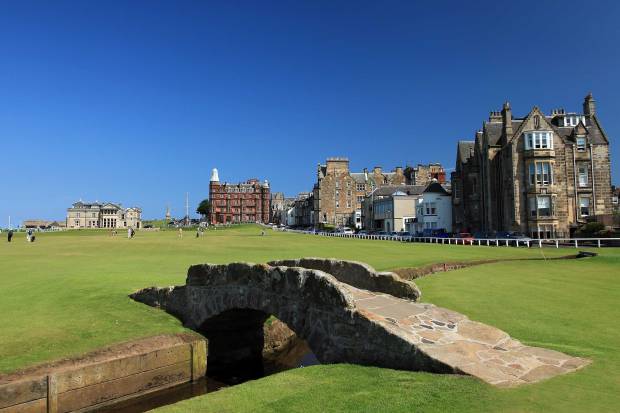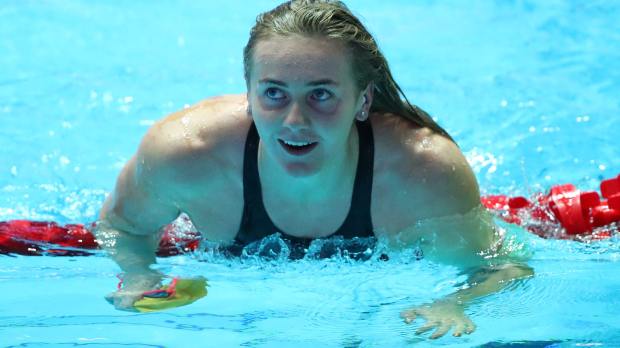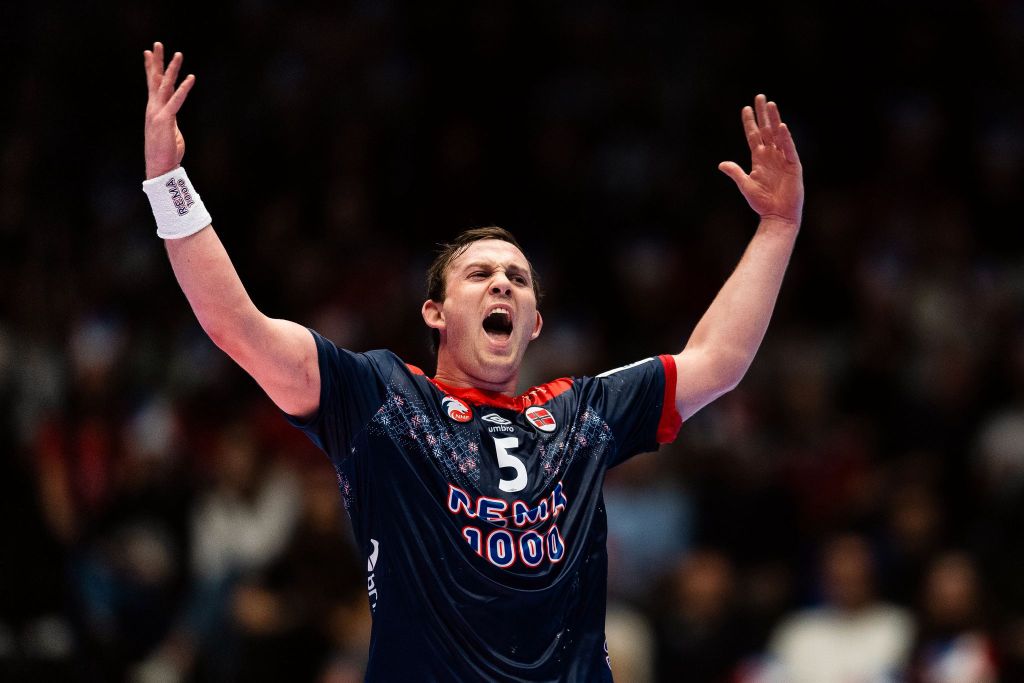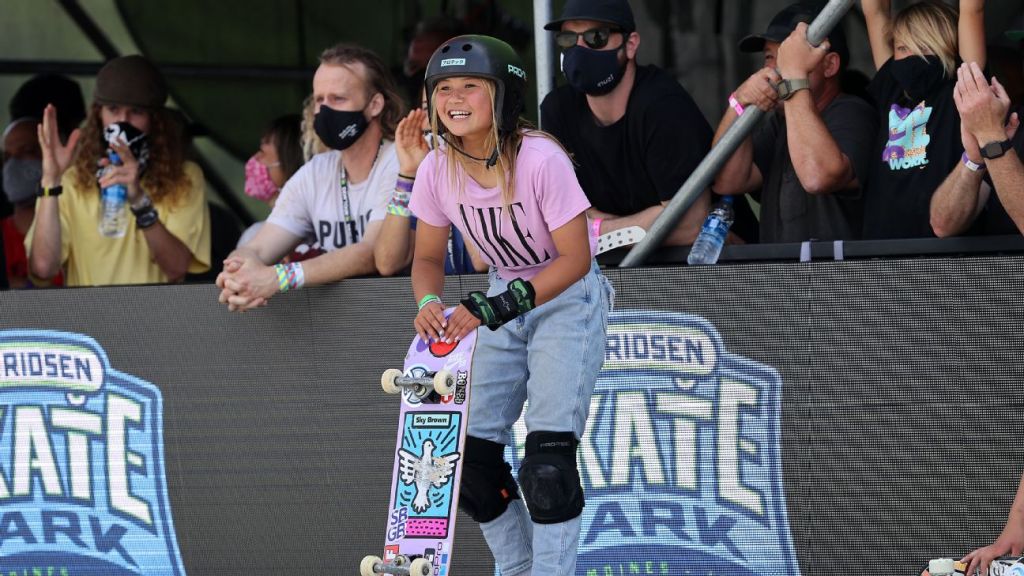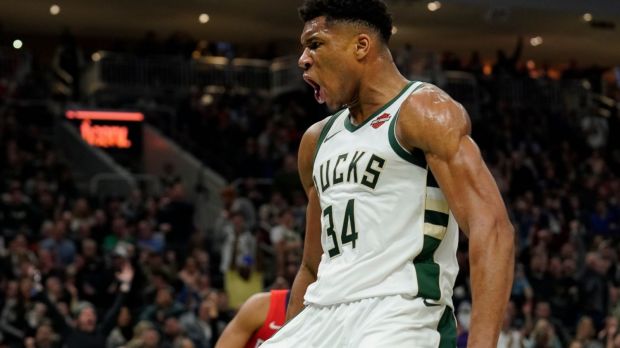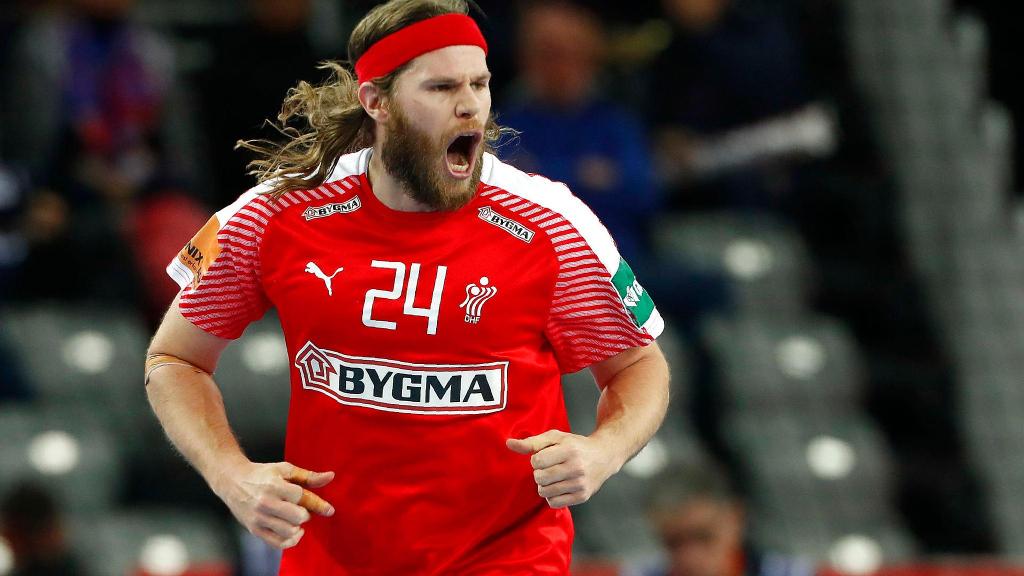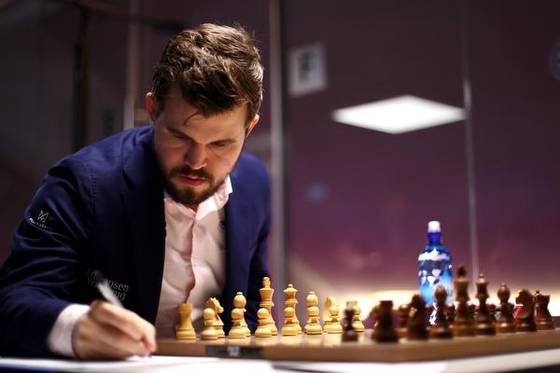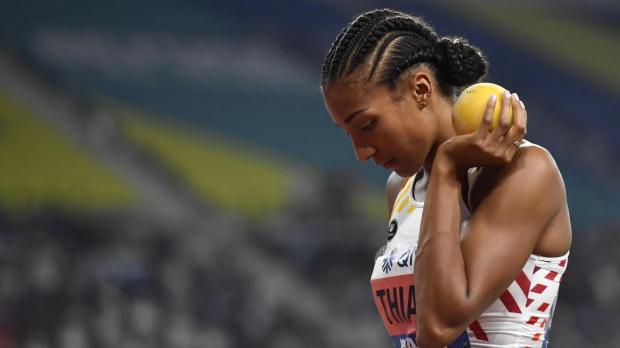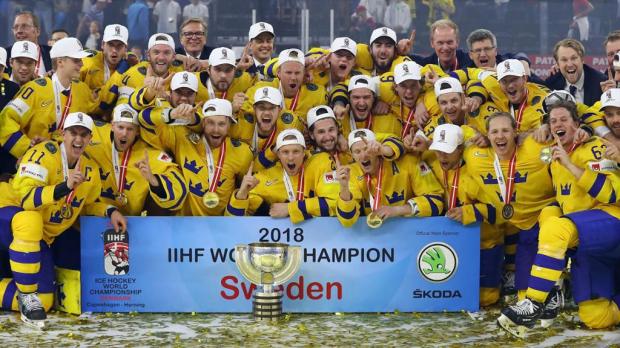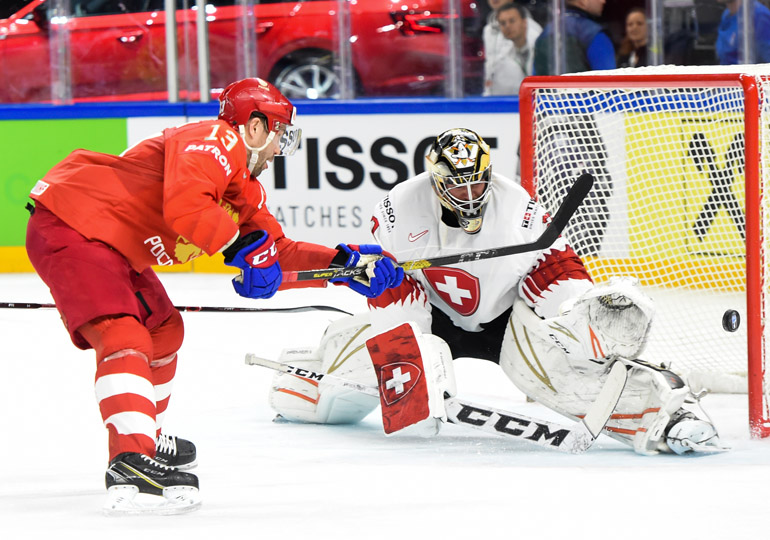They promised Heroes would come and when they finally departed, a trail of indelible memories was left behind: of on-ice feats that will ring for generations to come, of the visitors who fuelled an unprecedented party, of jam-packed arenas and rivals turned friends. Along with multiple accounts of parents and kids watching the sport for the first time, of locals inspired by vulcanized rubber and skates scratching the ice on a country that soon realized what it was missing on.
Fifteen years. That’s how long Denmark has squared off, spring after spring, with ice hockey’s powerhouse nations and how long it took to place the sport in the national conversation. A decade and a half of breakthroughs, milestones and small victories, but also of painfully slow growth in dedicated infrastructures, number of participants, attendances and exposure. So much that every other (European) top-division regular exercised its right to host the sport’s annual showcase, the main IIHF World Championship, before the Danes took a leap of faith, believing that a country with just 27 rinks, 5000 registered players and an average turnout of 1300 spectators in the national league could rise to the challenge. With a helping hand from the hockey world, both in the stands and behind the scenes, Denmark aced the test, crushing expected attendance figures and administering an immaculate sports event whose financial and capital benefits will trickle down the national hockey edifice for a long time.
However, as much I would like to continue to pump the Danes’ tires, this is a post about my personal experience in Denmark as one of 1100 volunteers that helped stage the Ice Hockey Worlds and, necessarily, as a rabid hockey fan, so let’s get on with it. First, should I introduce you to my “working” space?
Inside and outside Royal Arena
Contested by the 16 best ice hockey nations, the IIHF World Championship Top Division is yearly held across two venues, with teams divided in two groups of eight that run concurrently before a knockout stage. For the 2018 competition, that meant the city of Herning, in the central Jutland Region and the country’s hockey hotbed, welcomed hosts Denmark and seven opponents at the impressive Jyske Bank Boxen Arena, while the remaining eight nations, including bordering Sweden, faced off in Copenhagen and the brand-new Royal Arena.

Royal Arena shining under the sun in the first day of the 2018 IIHF World Championship.
Opened last year, the result of a private-public partnership that desired to bestow the Danish capital with a modern entertainment venue that could host major spectacles and sporting events, the Royal Arena is as conveniently located as any leading, non-central venue could be. Served by a regional training station that runs to the airport, the city centre or across the Øresund in a few minutes, and with two metro stations (Ørestad and Vestamager) in walking distance, the building is not only a centerpiece of Ørestad’s development into one of Copenhagen’s burgeoning residential districts, but also a state-of-the art, lustrous setting that blends glass and wooden details into an elegant, distinct Nordic style look.
Moreover, on the inside, the curvy concourses in all levels are spacious and delicately illuminated as to take advantage of the natural light when available, whereas the three-tiered stands came short of forming a full bowl since one of the sides ends in an adjustable walled area that can fit multiple purposes, including the installation of a provisional stand for the World Championship. With decent sightlines and dark seating all around, the arena might need a suitable audience to feel accommodating, yet, at near full capacity (12490 spectators for the tournament), the noise and colours popped out nicely to produce some raucous and genuinely fun atmospheres.
Still, there’s no arguing that the added magic of major, tournament-like sport events lies as much in what happens while the real action is going on as the festive environment before and after the matches, and that was definitely taken care off at the Worlds Fanzone. Conveniently located just across the street (Hannemanns Allé) from the Royal Arena, the 10.000m2 outdoor area staged a true manifestation of the friendly nature of hockey fans, with rival factions drinking, playing and, generally, hanging out together and behaving exceptionally well even as beer flowed freely.

A packed Fanzone awaits the start of the Final.
As someone much more used to the sectarian, markedly antagonistic nature of football fans – especially at the club level – I can’t exactly say that surprised described my feelings when I took a few minutes to enjoy the festival-like environment, but I was, definitely, a little proud of the sense of camaraderie emanating as game-time approached and the amicable banter that followed the on-ice battles.
Furthermore, with many activities and games fit for children and youngsters available, Copenhagen’s Fanzone was also a favourite of the natives, with the local organizers making a concerted effort to invite and provide arena access to schools for lower-profile matchups, and the kids, in turn, taking full advantage of the opportunity. Hopefully, a few of those boys and girls shooting a puck for the first time felt inspired to take on this beautiful sport (since they actually can, you know L).
Alas, I didn’t travel to Copenhagen to meander through the fanzone or sit in the stands, so what the hell was I actually doing?
At the Media Center
Media Center Assistant. Loooots of fun (”Czechoslovakia” speaker voice, please). No sporting event these days makes sense without the men and women tasked with disseminating its stories to the world, and making sure they possess all the conditions to do just that was the central mandate of our job.
In short, we’re talking about guaranteeing a functional working environment before, during and after the matches, from the early mornings (when teams held their practices) up to two hours after the end of the last game of the day (usually past midnight). That entailed, amongst others, distributing crucial tournament information to the people who needed it fast (and burning through an Amazonia-like tonnage of paper in the process), keep all the relevant updates available and easily accessible, sort out ways to help with any odd situations that may arise (baggage/equipment storing, for example) and, critically, make sure that they kept their minds sane in spite of the furious workload they’re subjected to during the fortnight. The secret? Media Center’s own Holy Trinity: Coffee, bananas and cookies!
Honestly, I know that might not sound that exciting unless you really enjoy sifting though piles of all kinds of hockey statistics, glancing at game reports or checking roster updates every day (*raises hand*), but the job does come with manifold perks that would make anyone’s time worthwhile, namely premium access to the media stand and several short windows to follow the action and soak the arena’s in-game atmosphere.
Nonetheless, if you’re a media buff like me or simply a hockey enthusiast, the opportunity to contact, meet and chat with all kinds of accredited media, from acclaimed reporters, broadcasters and writers to the more inconspicuous cameramen and photographers hailing from all parts of the hockey world is probably enticing enough, and things might get even better as soon as you realized that journalists only form a portion of the tremendous amount of hockey people that prowl the IIHF World Championship Media Center on a daily basis.

Look, kid. That guy’s a hockey legend.
Have you heard the expression “a healthy scratch watching from the press box”? Well, if players want to observe their teammates or opponents in action, they do need to find a seat in the Media tribune. And with them come the coaches. And team officials. And honourable guests, from NHL General Managers to head coaches or scouts, who would very much like to socialize with fellow hockey people and grab a lineup to help follow the activity on ice.
So, now imagine if you get a bit star struck simply by bumping into TSN’s Darren Dreger, or having to interrupt the intermission chat of the best commentating duo in the business (Gord Miller and Ray Ferraro) to deliver a game report, and now magnify it when you notice that Nick Lidstrom is standing a few meters away seconds before jumping on air to provide analysis of Sweden’s debut. Also spotted in this bustling area during the tournament by this overexcited hockey nerd: legendary players like Alexei Yashin (Russia), Jiri Fischer (Czech Republic), Miroslav Satan (Slovakia) and Martin Brodeur (Canada), NHL GMs such as Ray Shero (New Jersey Devils) and Jim Nill (Dallas Stars) and Stanley Cup winning-coaches like Mike Babcock and Dan Bylsma.
Ok, I know what you’re thinking now. “Stop bragging, idiot! Also, big deal. A bunch of has beens. What about the (current) stars of the show?” Well…
The Mixed Zone
If you’ve ever followed a major sports event, such as the Olympic Games or the FIFA World Cup, you’ve likely heard of the Mixed Zone, loosely defined as an area where athletes speak with the media after doing their thing in front of millions of spectators.
For a guy like Usain Bolt at the Olympics, the Mixed zone ritual is an interminable, energy-sapping labyrinth of international press that has to be navigated, and while the IIHF World Championships and most of its athletes obviously aren’t at the same level, hockey players have to deal with a similar kind of apparatus after every game, with all competitors funnelled right as they leave the ice to a room where they meet plenty of faces eager to get a money quote.
A looping area divided in four sections, the Mixed Zone is a tightly-run entity that offers broadcasters and official TV rights holders the first crack at the players, who subsequently move to face radio reporters, web media personal and the voracious print /online writers in this order.

The Mixed Zone room (after a practice session).
While not obliged to express their feelings, every dressed player (and head coach) is still required to do the full tour and since competition for exclusive time with star players is fierce, things are bound to get messy and confusing without some kind of proactive action. And that’s where we entered as in order to expedite and facilitate the process, we kept an eye on everyone to guarantee no regulations were broken (especially regarding illegal video recording), but also sought media requests, tried to liaison with the team media managers, and regularly helped spot and stop the most coveted athletes so that everyone would leave happy. Likewise, a similar procedure followed every practice session held on the main arena or the adjacent (and absolutely freezing) practice rink.
All in all, standing on the mixed zone, rubbing shoulders with reporters and standing centimetres apart from every hockey star in the tournament was, unequivocally, a highlight of my experience. And since I was fortunate enough to be assigned for it frequently and on a daily basis, might as well just spit out some loose (but innocuous) observations based on what I saw and listened in there regarding the eight teams that formed group A plus Canada, transplanted from Herning for the quarter-finals.
Insights from the Mixed zone
- Exactly where’s the separation between Belarus and Russia? I’m aware of the close political, cultural and linguistic ties, but it still took me a surprisingly long time (and a lot of accreditation double-checking) to pinpoint the breadth of the Belarussian contingent dispatched to Copenhagen as they diligently split allegiances, attention and resources through the group stage. Additionally, reference to the unpredictable scheduling of Belarus’ head coach(es) declarations, dizzyingly bouncing at will between off-days, post-practice, pre-game and post-game, in turn creating a few logistical problems, and to goalie Vitali Trus, winner of the “seriously, how old is this guy?” award by defying his pubescent looks for a full decade.
- The Austrian’s post-victory routine with their travelling devotees was fascinating, but they were still, by far, the quietest bunch in terms of press interest. Virtually no domestic coverage, limited outside curiosity for a roster that lacked buzz, and a lot of expectant faces trekking the mixed zone and waiting for a chance to share their thoughts that rarely came.

Ice-level view of the stands.
- How big is hockey in Czech Republic? I figured I had a good idea, but it was still impressive to notice the all-hands-on-deck coverage on every platform, from TV to web and print. Including, I was told, plenty of eminent on-air talent reporting from Denmark, and large amounts of backstage/TV production equipment on site.
In addition, the frenzy around the team noticeably piqued after the arrival of the two NHL Davids – even if one persisted in trying to skip part of his media obligations – whereas the distinct change of the guard was also evident in the mixed zone. While Tomáš Plekanec’s presence barely registered a blip, Martin Nečas prominence ratchet up by the game. Oh, and Philadelphia’s Radko Gudas is a surprisingly affable guy off the ice… or maybe his invaluable contributions to the Penguins playoff cause were simply too fresh on my memory to cloud my judgement.
- Allez Les Blues. Putting aside the fact that I’m still bummed Stéphane da Costa somehow evaded my watchful eye, the French definitely shot up my preferences during the tournament. A rather small but polite and welcoming group of journalists, players thrilled to answer every request regardless of the origin, and our unofficial award for the finest media managing work claimed by Team France’s Valérie Thibault. Well, the free keychains/pins helped too, I guess.
- The Russians. Ever-present in all media areas, they were clearly better left on their own unless you happened to speak the language as both players and media looked noticeably uninterested in making much of an effort to speak English. In fact, such trump card was repeatedly played by many of their KHL-based elements, which further increased the international media burden on the likes of Pavel Datsyuk and Artem Anisimov (btw, we missed you, Ovi). Get ready, Mr. Kaprizov, that’s what the near future holds for you, sir. Outside of ridiculous offensive stats on the ice and female worshipping of it, of course.
- If clinging to the past defines the current state of Slovakian hockey, shipping one of the less than a handful of radio reporters working in the tournament is its media-equivalent, right? Anyway, kudos to coach Craig Ramsay for the gracious way he handled the pressure of the Slovak media after the early exit, and to captain Andrej Sekera, also their runaway leader in the number of post-game engagements. Meanwhile, he didn’t play much, but the tournament’s youngest participant, 18-year-old Martin Fehérváry, drew his fair share of curiosity in the mixed zone.

Rikard Rakell doing extra hours in the mixed zone after one of Sweden’s early matches
- For geographical reasons, Sweden’s media contingent was, by far, the biggest in the competition and, naturally, it just kept growing as the Tre Kronor marched to the title. Already a premium ticket for their blend of talent, recognizable faces and English proficiency, all Swedish mixed zones were wild, especially in the print media area, unbearably crowded by the end. Still, no one could ever criticize the players’ effort as the Swedish stars held court multiple times and rarely rushed out of the loop. The patience displayed by the likes of Rickard Rakell, Oliver Ekman-Larsson, Mika Zibanejad and the late arriving Filip Forsberg and Patric Hörnqvist was truly commendable.
On the contrary, it was disconcerting to notice that a guy like Hampus Lindholm flies as much under-the-radar at home as in the NHL and even captain Mikael Backlund’s low-profile from Calgary held up. Young Elias Pettersson broke a finger midway to cut short his tournament, but I can report his media education is going quite well (the same can’t be said of his physical maturation), such was his cordiality and generosity in repeatedly answering the same questions about Vancouver, whereas head coach Rikard Gronborg really strikes an imposing presence, his mastery in contact with the media and ability to spew out words without actually saying much the final proof that an NHL opportunity is right around the corner.
- Not unlike their hockey team, Swiss media was hardly noticeable throughout the first week of the tournament, displaying the usual Helvetian reserve and efficiency, but as the group increased and the Eisgenossen soared, they made their presence felt. For instance, by taking over the final corner of the print section and diligently waiting for their heroes to navigate the rest of the maze, which also made our job easier. Moreover, there seemed to be a real sense of togetherness that extended from the team to the media, regardless of language differences, and that probably contributed to make Patrick Fischer’s ritual though the media zone more enjoyable, as the 42-year-old head coach steadily ploughed through all the requests in the country’s three official languages (Italian, French and German).
As for the players, there was a healthy mix of interest dispensed to both the European-based guys, especially the breakout names, and the NHL guys, but Roman Josi, unsurprisingly, proved to be on a different level, brushing aside a disappointing end of the season and all the miles logged in the last two seasons to show up in Copenhagen ready to handle almost as much off the ice as inside.
- How can you infer that it is time to scale back your hockey-time allocation? When you can identify TSN’s Tessa Bonhomme in the flash zone area without having to check her accreditation card…Anyway, Canada relocated from Herning, and while I obviously can’t speak to their approach in the preliminary stage, their press managers definitely meant business in Copenhagen after the elimination games, escorting players from stop to stop and making sure they didn’t talk more than the absolutely necessary.
McDavid? He dutifully stopped by TSN’s place and then moved straight to the print section, where this happened: “Connor, Connor, anyone wants Connor?” – Cue pandemonium and mass migration, with reporters pushing and elbowing each other and a major scrum forming in a matter of seconds, an indistinct melee of phones, audio recorders, heads and arms. 97 fielded a pair of questions and onward he went, with whoever missed him left to grab someone else. Amongst the frontrunners I can nominate Ryan O’Reilly and defenseman Colton Parayko, but it was Aaron Ekblad who drew my biggest chuckle throughout the experience at the mixed zone: A “Do you want to join too?” directed at a volunteer too animated in his attempts to not let another Canuck slip away from a web request.
Extras:
- To Team USA’s press manager: Please return my semi-final sheet. Or, at least, next time make sure any of the inquiries is met. Tks. Also, props to Patrick Kane, the American captain who answered the call even after their embarrassing semi-final performance to honour his much-appreciated commitment to the competition.

A few American players kick a ball around before the third-place playoff.
- The Finnish players never landed in Copenhagen, but the amount of media (and fans) that still showed up for the medal games was impressive.
Press Conferences are only held at the World Championship from the quarter-finals forward, which means I was present at just two (CAN-RUS and USA-CAN) of the six scheduled for Copenhagen, but I’ll still leave two notes.
- The third place match really highlighted the lack of North American interest in the tournament. Outside of the TSN crew, there was one (I think) Canadian reporter looking for Bill Peters’ takes on the game. Meanwhile, the victorious American coach, Jeff Blashill, literally held a one-on-one exchange with reporter Julie Robenhymer.
- Why ask your coach anything in English when you can just swarm him and start the deposition after the press conference is called off, right Russian media?
And that’s it for behind-the-curtain fodder I’m willing to share. A few more sections remaining in this post though.
Five favourite players to watch during the tournament
- Connor McDavid
The (next) best hockey player in the world performing in front of my eyes and I didn’t even had to cross the Atlantic? Pretty cool. Still, If only he hadn’t forgotten to sip his coffee before the bronze medal match…
- Rikard Rakell/Mika Zibanejad
They made some sweet music together on the ice, and repeatedly staying late in the mixed zone meant I could actually listen to their views on the game.
- David Pastrňák
The entire gulf in intensity between the NHL playoffs and the IIHF World Championship expressed in one night. Although Patrick Kane didn’t appreciate my hot take enlisting Pastrňák as the tournament’s second best player and the Czechs suffered in result.
- Pavel Datsyuk
A legend walking amongst the mortals.
- Filip Forsberg
I was on the edge of my seat (if I had one, duh) every time he received the puck in the offensive zone. A magnetic presence that deked the hell out of Sweden’s rivals.
Five memorable games
- CZE 4-3 RUS (OT), Group Stage
A rivalry always incensed by massive political and sporting backdrops, the temperature rose quickly at Royal Arena when the Russians opened the score early to break the game apart in front of a rowdy sellout crowd. Fuelled by the fire-branding talent of reinforcements David Krejčí and David Pastrňák, two sleepless demons who combined for 7 points on the night, the Czech should have claimed the three points in regulation, however the 3-3 scoreline was upheld until OT.
Eventually the irrepressible Pastrňák deftly banked the winner to cap an exciting extra session, but the dropped point would make all the difference to separate both teams in the final group standings.
- RUS 4-5 CAN (OT), Quarter Final
It’s a shame that hockey’s premier arch nemesis contested an afternoon tilt in a Royal Arena short of full capacity (9.017), but the hockey more than made up for the tepid ambience.

The vaunted Canada-Russia QF matchup
It all started with a Colton Parayko howitzer from the point, the first of three crucial powerplay goals for Canada, and after Russia rallied from a 2-0 deficit in the second, the teams went head-to-head in a wacky third period that demanded extra innings. An overtime hero in PyeongChang a few months ago, Kirill Kaprizov’s debatable penalty opened the door to Canada and Connor McDavid took advantage, threading a sweet pass that was deflected into the winner by Ryan O’Reilly. In a blink, Russia’s dream of an Olympic / World Championship double in the same calendar year went up in smoke.
- CAN 2-3 SUI, Semi-Final
There are few things a neutral sports fan enjoys more than a monumental upset, and even if this wasn’t the best possible Canadian team, hats off to the underdog Swiss for taking full advantage of the opportunities, mustering timely secondary scoring (Scherwey, Hofmann and Haas hit the twine) and surviving countless periods of intense Canadian pressure without capitulating or taking penalties.
With a 45-17 discrepancy in shots on goal, Switzerland’s victory was only possible because goalie Leonardo Genoni stood on his head, including a last-second desperation save on Connor McDavid, yet the way the Swiss collapsed in front of the net and kept play to the outside said a lot about the team’s mettle and validated this historical result.
- CZE 3-2 SVK (OT)
If someone needed a reality check on how much this tournament means for European nations, this was it. A vibrating, electric atmosphere inside a stuffed hockey arena in the second day of the tournament, a Saturday delight sponsored by a reported 7000 travelling Czech fans and a mass of boisterous Slovaks, an engaging party disguised as a hockey game between two abutting, brotherly nations with so much in common.
On the ice, the favoured Czech carried the play, but the points belonged in full to the scrappy Slovaks until Martin Nečas found a hole on Marek Čiliak’s armour with just 10 seconds to go in the third period, blowing the roof off the building in the process. Later it fell to teammate Dmitrij Jaškin the responsibility to put an end to a wonderful contest in overtime, picking the puck off his own shot before slipping a backhand over the Slovak goalie’s leg, and outside went both sets of fans, eager to continue the festivities through the night.
- SWE 3-2 SUI (SO)
Going into the final day, I knew it would take a majestic decider to take that Czech Republic-Slovakia encounter off the higher perch, and even if history was millimetres away from being made in Copenhagen, the tournament’s climax ultimately delivered enough drama to nudge just ahead.

A Swiss defender lugs the puck up the ice during the Final against Sweden
Taking the lead twice to stun the mostly yellow-clad crowd, the Swiss once again relied on a spectacular Genoni to keep the Swedes in check on this reedition of the 2011 Final, yet the prohibitive tournament favourites managed to puncture the red wall enough times to level at two and force sudden-death. Then, a spine-tingling 20 minute, 4 on 4 extra session featured incredible chances for both sides, particularly Kevin Fiala’s point-blank shot denied by Anders Nilsson’s glove and Adam Larsson’s ping at the final buzzer, however destiny had reserved the abhorrent shootout format as the ultimate tiebreaker. Inching closer to an unprecedented World title, the Swiss again took the lead (Andrighetto) only to watch as Sweden responded with back-to-back conversions authored by NHL All-Stars Oliver Ekman-Larsson and Filip Forsberg. The weight of the world fell on Nino Niederreiter’s shoulders, but he failed to deceive Nilsson and assured Denmark’s maiden tournament would crown their neighbours and a repeated Champion.
Notes on Copenhagen (and Malmö)
You know the drill. This ain’t a travel blog, but I can still summon a few general thoughts on the setting, can’t I?
- Yes, the Danish Capital is laughingly expensive. But one of the World’s most liveable cities is also absolutely gorgeous when the sun is shining, with locals (and expatriates) rushing to sprawl on the parks, streets and cafes. And boy, the glorious weather decided to bless the World Championships with delightful regularity, I’m happy to report.
- As an advocate of the “walk-until-your-feet-hurt” city exploration method, it can’t get much better than Copenhagen’s accessibility and compactness in terms of major venues and sights. It’s a pedestrian paradise without the bustle of Amsterdam, and still brimming with canals, water and green everywhere you look.

Frederiksberg Have
- Getting back, for a minute, to my hockey fan persona. What was up with the complete absence of outdoors publicizing the biggest sporting event in the country’s history around the city center? One banner tucked over one of the side exits of the main train station won’t cut it for the majority of tourists oblivious to the competition, much less shoddy advertisement in some peripheral metro stations on the way to Ørestad.
- Speaking of Ørestad: if you find yourself in the area and enjoy modern architecture, take the time to admire some of the edgy residential buildings.
- With minimum research you’ll discover the must-watch sights and tourist traps (one rhymes with idle barmaid), so I’ll leave you with my own non-hockey fanboy moment: Lingering around Christiansborg’s courtyard half-expecting Birgitte Nyborg to turn up and start whispering with political adversaries under the arcades.
- Favourite places to walk: Frederiksberg Have, Fælledparken (admittedly because of all those football fields marked on the grass) and the lakes area (also quite good for people’s watching, if you’re into that).
- Favourite place to Bike: Kalvebod Fælled, in Amager. A splendorous wild area of protected wetlands, forest, and lakes rich in wildlife. It’s massive, but you can reach the outer edge in ten minutes from Brygge Islands, just across the canal from the city center.
- Finally, definitely reserve one day to visit Malmö, just across the Øresund. The views from the bridge crossing are worth the train fare, and the Swedish city has undeniably eschewed for good the bad reputation that stemmed from its industrial past, social divisions and multi-cultural makeup.

If you can tell why I framed this Malmö location, we’re friends for life.
Be aware that Malmö has a charming yet small historical centre (Gamla Staden). Blink and you might miss it coming out of the train station. Thumbs up for the tons of green spaces, the two modern sports venues (Malmö Arena and Swedbank Stadium) and the upscale Västra Hamnen district. Especially its waterfront, a stone throw away from the Turning Torso, which offers great views of the coast, the bridge and the Øresund.
Ok, now that’s really all I have for you in this post. Although not the totality of my “coverage” from the 2018 IIHF World Championship. If you care to read my hockey thoughts on the tournament, head here. If not, thanks for reading.
